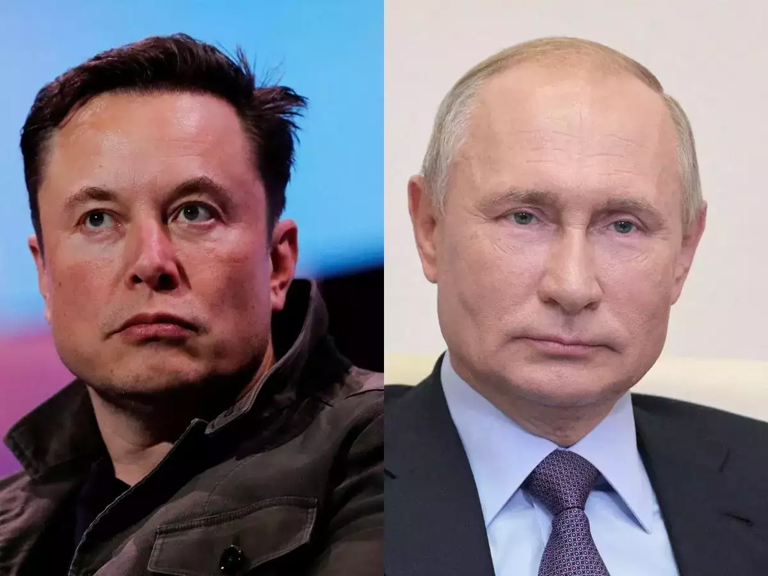Russia has developed a new sophisticated monitoring system to detect and neutralise signals from SpaceX’s Starlink satellites, called Kalinka. This new system often referred to as the ‘Starlink killer’ is most likely to be Elon Musk’s biggest headache when it comes to establishing the Starlink system worldwide. Starlink, operated by Elon Musk’s SpaceX, has been a key communication tool for Ukraine’s military since the escalation of Russia’s offensive in February 2022. Ukrainian forces have used Starlink to operate drones, direct artillery fire, and maintain secure battlefield communication, giving them a tactical edge.
What is the Kalinka System
Kalinka, developed by the Russian Center for Unmanned Systems and Technologies (CBST), is being touted as a significant advancement in electronic warfare. According to CBST Chairman Andrei Bezrukov, the system can locate drones, boats, and other devices linked to Starlink terminals within a range of up to 15 kilometres. Speaking to Russian media, Bezrukov stated, “The basic principles of radio signal transmission have not changed since the invention of the radio.”
He further explained that Kalinka’s detection range depends on factors such as terrain and the electronic systems deployed by enemy forces. The system can reportedly even detect communication terminals connected to Starshield, a militarised version of Starlink.
Bezrukov noted that the timeline for mass production would depend on the demand from Russian forces operating in conflict zones. Kalinka is already being integrated into various platforms, including boats, jet skis, and helicopters, to enhance its versatility across different terrains and environments.
Starlink’s Critical Role in Ukraine
Starlink is a satellite-based internet system that uses a constellation of small satellites in low Earth orbit to provide high-speed broadband access globally. Its deployment in Ukraine has been instrumental in maintaining communication in areas with damaged infrastructure. Ukrainian forces have relied on Starlink to coordinate military operations, including drone strikes on Russian targets and real-time battlefield communication.
For example, Ukrainian drones connected to Starlink have been used to identify and attack Russian positions, correct artillery fire, and transmit video footage back to military commanders. Starlink’s encryption capabilities have also facilitated secure group communications between soldiers and commanders.
Russia’s Countermeasures
Russia’s development of the Kalinka system is seen as a direct response to Ukraine’s successful use of Starlink. By disrupting Starlink signals, Russia aims to neutralise Ukraine’s technological advantage. The Kalinka system’s ability to identify and target both stationary and mobile Starlink terminals could significantly impact Ukraine’s drone and communication operations.
Bezrukov highlighted the system’s potential, stating, “Kalinka can identify unmanned boats and aerial drones, including the so-called ‘Baba Yaga’ drones,” which Ukraine has deployed in strikes against Russian infrastructure.
A Broader Global Concern
The implications of the Kalinka system extend beyond the Russia-Ukraine conflict. Starlink’s role in warfare has drawn scrutiny from other global powers. For instance, China has raised concerns about the network’s ability to resist jamming and its potential to interfere with national security operations. Some Chinese experts have even suggested exploring methods to disable Starlink satellites if necessary.
Before the introduction of Kalinka, Russian forces primarily relied on visual tracking to monitor unmanned drones and boats used by Ukraine. Kalinka marks a significant leap in Russia’s electronic warfare capabilities, offering a more advanced and reliable method to counter drone and satellite-based threats.
According to reports, the system is undergoing rigorous combat testing in Ukraine and has already demonstrated its effectiveness in detecting and targeting Starlink-connected devices. While small-scale production has begun, larger-scale deployment will depend on operational needs and demand from Russian military forces.
The Kalinka system could shift the dynamics of the ongoing conflict by undermining Ukraine’s reliance on Starlink technology. Its success in neutralising satellite communications may influence the strategies of other nations and highlight vulnerabilities in using satellite networks for military purposes.
As combat testing continues, the effectiveness of Kalinka will be closely monitored, not only for its impact on the Russia-Ukraine conflict but also for its potential to shape future advancements in counter-satellite technologies globally.




